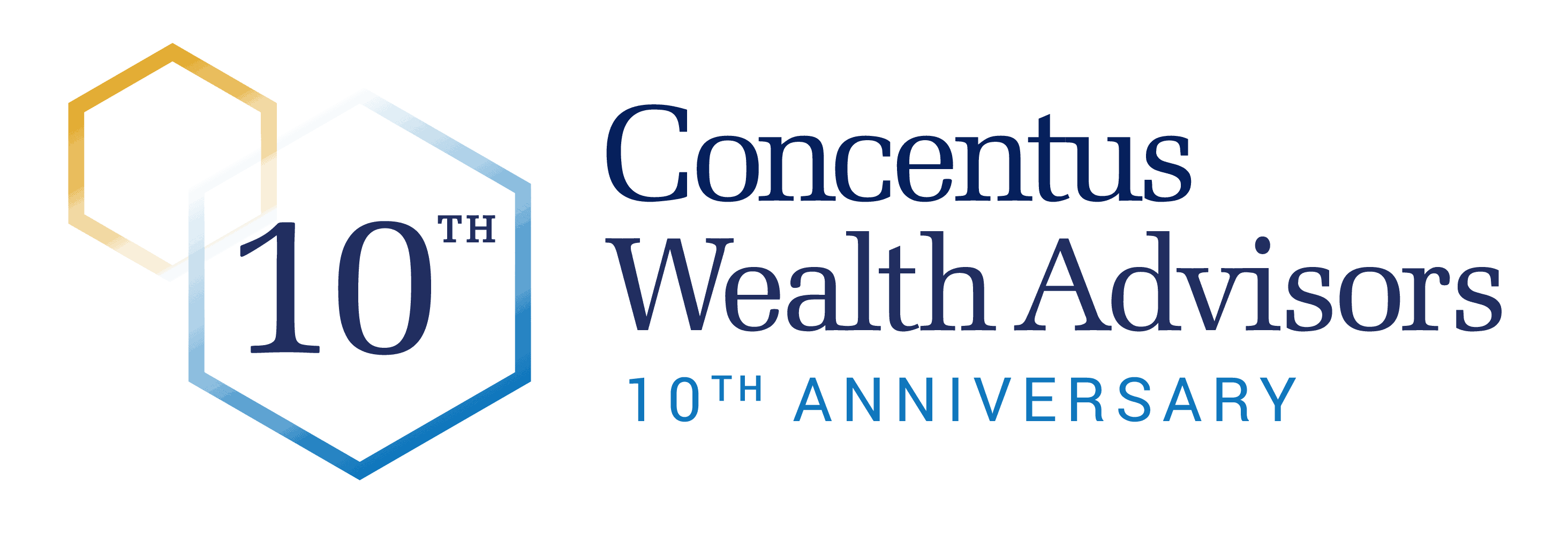“The time to do lifeboat drills is not after the ship has struck an iceberg”
– Nick Murray
In last month’s article, we marveled at the miracle of human innovation, and our gratitude for the opportunity to invest in it. This month, we ring in the New Year as we do every year, by re-publishing our annual reminder of the importance of avoiding surprise in our investing efforts. We hope this article will help you to be prepared for the investing markets this year, and to avoid unpleasant surprises.
Last Chance to Register for January 24th!
We have been publishing our “Great Investors” article series for over 10 years now, and this series has consistently been our most popular content every year. We thank our loyal readers, and we truly appreciate your comments and feedback over the years.
We recently changed the format for this series from a monthly written commentary, to a quarterly live stream seminar format, to allow for a more interactive discussion of our investing philosophy. During these sessions, we will deliver a brief talk summarizing our outlook on current events, delivered in the same style you have come to appreciate in our monthly article series. We will then have ample time for Q&A and discussion, in order to address any additional questions you may have.
Our next seminar will be held on Wednesday, January 24th, and will be available via online live stream, and in person for those who can attend. For those who attend in person, our talk will be followed by cocktails and light fare at the Philadelphia Country Club. We will also make a recording available for those who cannot attend at the scheduled time.
You can register HERE to attend, or request your copy of the recording.
The Year In Review
It is both delightfully simple and genuinely compelling to summarize the behavior of the equity markets, not only in the calendar year just ended but over the last two years. We can in fact do it in two sentences:
In 2022, the Dow, the S&P 500 and the Nasdaq 100 experienced peak-to-trough declines of 21%, 25% and 35%, respectively.
A week before Christmas 2023, all three were in new high ground on a total return basis (that is, including dividends).
“Why” stocks behaved like this is irrelevant to the wonderful lessons to be drawn from this experience. There are almost as many theories and explanations of why as there are market commentators, of whom we are happily not one. (We would point out, however, that the number of said commentators who successfully forecast both the market action of 2022 and that of 2023 is, to our knowledge, plus or minus zero.)
What should matter most to us long-term, goal-focused, plan driven equity investors is not why this happened, but that it happened. Specifically, that there could be a pervasive and very significant bear market over most of one year, and that those declines could be entirely erased in the following year. Although not always as quickly or as perfectly symmetrically as the 2022-23 experience, in the largest sense that’s how it works.
Simply put, we believe that this is the central lesson of the last 2 years of equity market behavior, and really the only fact worth reviewing as we reflect on the year that has just passed.
A New Year Resolution
January is the time of year we all make our resolutions for better living in the coming year. As your investment advisors, we recommend that you adopt a resolution to become a better investor by not allowing surprise to creep into your investing strategy this year because we have learned that “Surprise is the Mother of Panic.”
All good investing requires control of our emotions in the face of uncertainty about the future. There is an inverse relationship between the intensity of emotion that we may be experiencing at any given moment, and our ability to think and act rationally. As our emotions crank up, our ability to act rationally begins to deteriorate. Emotion is the enemy of sound investing policy.
When fear and panic set in to our minds, it is almost impossible to act rationally, and we are most susceptible to our worst and most regrettable investing mistakes. For evidence of this, we need look no further than the millions of investors who liquidated their entire investment portfolios in the Fall of 2008, or March of 2020, in hopes of avoiding the global financial meltdown they were terrified was coming. Instead, as it turns out, those periods may have provided investors with the greatest buying opportunity of a generation, as stock prices plummeted far below their real intrinsic value.
So how can we engineer our investment philosophy in a way that avoids the possibility of panic?
A good place to start is by understanding what makes us experience panic. Fear does not necessarily spring from the news of some economic or geopolitical “crisis”, like higher interest rates or recession fears. Fear comes because we are surprised by these events – we are blindsided by a reality for which we were not prepared, and which causes us to lose our bearings. This surprise causes us to lose our ability to make sense of the world around us, and so we become fearful, and uncertain about what will come next.
The best way to prevent fear and panic from sabotaging our investment program is thus to prevent ourselves from being surprised by events. In the simple wisdom of Nick Murray, we must do our Lifeboat Drills before the ship sails out of port.
The good news is that this resolution is relatively easy. The best way to avoid surprise is to understand the possibility that our investments will experience volatility this year, as well as the severity of that possible volatility. In other words, we must vigilantly school ourselves in the history of markets, so that we can constantly remind ourselves of the difference between volatility (the normal incidence of temporary decline) – and risk (The historically nonexistent chance of permanent loss) in our portfolio strategy.
So as 2024 begins, let us resolve to understand the historical incidence of bear markets.
Bear Markets
We define a “Bear Market” in the stock market as a more extended, steep (20% or more) decline in stock prices. Bear Markets are the birthplace of full blown panic, and can test the emotions of even the most seasoned investors. They are so scary, because they almost always occur during a time when the whole world is convinced of some geopolitical or economic catastrophe which is certain to tear down the fabric of our lives and economy as we know it.
Bear Markets usually last for a year or two before they burn out and markets start to recover. In fact, the longest bear market since World War 2 came in 1946-1949, which took 36.5 months for the S&P 500 to travel from its peak to its trough. Fortunately, Bear Markets happen fairly infrequently, and should be expected on average about every 5 years. In fact, the following is a recent history of Bear Markets in the post-war era through the end of 2023.
Please note that we include here five episodes during which the S&P 500 declined by slightly less than 20%, simply because they felt like bear markets, too. In addition, this chart does not include dividends in the S&P 500 return, which makes these bear markets appear worse than they really were. As a result, this chart brings the investor closer to the actual emotions experienced in real-time when the bear actually strikes.

The takeaways from this chart are:
- Although there is no way to predict future market conditions, we should be prepared that equities may continue to struggle this year. Equities still have not made a new high since January of 2022, so are still technically in a Bear Market, which has now lasted 24 months. Although markets have experienced positive momentum recently, there is no telling how long a Bear market might last.
- Historically, Bear Markets can cause temporary declines of 20% to 50% of equity capital, and the worst on this chart was down 57%, which is more than double the current decline. This is likely to happen again, and although we do not expect it to be this year, it could.
- However, during this period of 75 years, the stock market moved from 19.3 in May of 1946, to 4,769 by the end of 2023. The patient investor over this period returned over 247 times her money.
We must keep in mind that Bear Markets can happen at any time, and they can be painful. However, historically they have always been temporary setbacks in the context of a long term uptrend. Historically speaking, the declines are temporary, and the advances are permanent.
Empowered vs. Victimized
Before we leave the topic of volatility, it is also important to point out a transformative insight which can be drawn from truly understanding this data, and which can allow the investor to use market declines as opportunities to remain confident, while everyone else around us is screaming in terror and uncertainty.
When we understand, and come to peace with this data, we can begin to embrace equity volatility as a positive phenomenon, and in fact the reason for the premium return from equities. The term “volatility” refers to the relatively large and unpredictable movements of the equity market, both above and below its permanent uptrend line. Equities can, and frequently are, up over 20% one year and down 20% the next, and vice versa. However, if we believe that the long run returns of equities will approximate the past return, we begin to understand that these periods of downside volatility must likewise at some point be corrected by a period of upside volatility, greater than the long term average of roughly 10% per year.
Volatility is the reason equity investors are rewarded over time with premium returns, as long as we have the emotional strength to live through it. For the wise and patient investor, it also provides a unique opportunity to accumulate more equities during a time when prices are temporarily depressed… kind of like a “Big Sale”.
Helping Those You Care About
Over the last two years, the faith of all long-term investors has been severely tested. As must happen every few years, we were basically required to do just one big thing: reject the idea that “this time it’s different,” and hew to the belief that “this too shall pass.” We must not doubt that we’ll get many additional opportunities to practice patience and discipline in the years to come.
Successful investing, while always fundamentally simple, will never be easy. You may have a family member, colleague or friend who perhaps did not fare as well during the 2022-23 bear market, and who you feel might have benefited from the sort of advice you were receiving. Should that be the case, we would certainly appreciate your introducing us to them. We very much enjoy working with you, and would welcome the opportunity to offer the same level of planning and service to people whom you care about.
You are more than welcome to bring a friend or family member to our event on January 24th, or to share the recording of our discussion that night.
Thank you, most sincerely, for being our clients. It is an honor and a pleasure to serve you.

